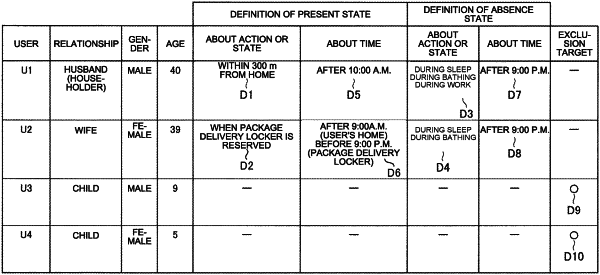| CPC G06Q 50/28 (2013.01) [G01C 21/34 (2013.01); G08B 21/02 (2013.01); G08B 21/22 (2013.01); G10L 15/00 (2013.01); G10L 15/005 (2013.01); G10L 15/22 (2013.01); G10L 15/222 (2013.01); G10L 2015/223 (2013.01)] | 14 Claims |

|
14. An information processing method executed by a processor, comprising:
acquiring sensed data associated with a first user;
acquiring action history data of the first user that includes a plurality of past actions of the first user;
determining a plurality of sensed data-action relevance scores based on the sensed data and the action history data, wherein each sensed data-action relevance score of the plurality of sensed data-action relevance scores indicates a relevance between the sensed data and a corresponding action of the plurality of past actions;
estimating an action of the first user from the plurality of past actions, based on the plurality of sensed data-action relevance scores;
acquiring lifestyle data associated with the first user;
determining a score indicating a relevance between the lifestyle data and the estimated action;
predicting a future action of the first user based on the determined score indicating the relevance between the lifestyle data and the estimated action;
predicting one of a presence of the first user or an absence of the first user at a visit destination, based on the predicted future action;
setting, based on an age of a second user that is less than a determined age, the second user as a non-target user for prediction of one of a presence of the second user or an absence of the second user at the visit destination; and
outputting, to an external device, a result of the prediction of the one of the presence or the absence of the first user at the visit destination.
|